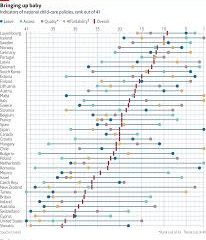The Current State of Childcare in the UK: Standards and Challenges

Introduction
Childcare has become a significant issue in the UK as families navigate balancing work and home life. The importance of well-structured childcare services cannot be understated, especially in the wake of the COVID-19 pandemic which has altered both work patterns and demands on parents. As families increasingly rely on childcare providers, understanding the current standards and challenges in this sector is crucial for parents, regulators, and providers alike.
Current Standards in Childcare
In 2023, the UK government has implemented new guidelines aimed at elevating the quality of childcare services. This includes more stringent qualifications for childcare professionals, with a focus on emotional well-being and early childhood development. The Statutory Framework for the Early Years Foundation Stage (EYFS) has been updated to include new training modules which cover areas such as safeguarding, diversity, and promoting positive behaviours. According to Ofsted, more than 90% of early years settings were rated ‘good’ or ‘outstanding’ in recent inspections, illustrating a high standard in the majority of cases.
Challenges Faced By Childcare Providers
Despite these improvements, the childcare sector is facing significant challenges. A survey conducted by the National Day Nurseries Association (NDNA) in early 2023 revealed that 72% of childcare providers reported difficulties in recruiting and retaining qualified staff. Factors such as low wages and high workloads have contributed to this crisis, making it difficult for facilities to maintain adequate staffing levels. Additionally, the ongoing financial strain experienced by many families is resulting in increased demand for subsidised childcare, leading to further pressure on providers to keep fees affordable amidst rising operating costs.
The Impact of Regulation and Future Trends
As government regulations continue to evolve, there is an emphasis on ensuring all children have access to high-quality early education. The government has begun to explore options such as flexible funding models, aimed at supporting lower-income families and addressing the affordability issue. Moreover, with parents working from home becoming more common, there are calls for childcare settings to adapt to offer more flexible hours and services that cater to a family’s changing needs.
Conclusion
The landscape of childcare in the UK is rapidly changing, shaped by new regulations, workforce challenges, and shifting parental expectations. As providers work to meet the needs of children and families, it is essential for stakeholders to collaborate on solutions that ensure high-quality, accessible childcare for all. While the future presents hurdles, the commitment to improving standards in childcare is of utmost significance for the next generation.









